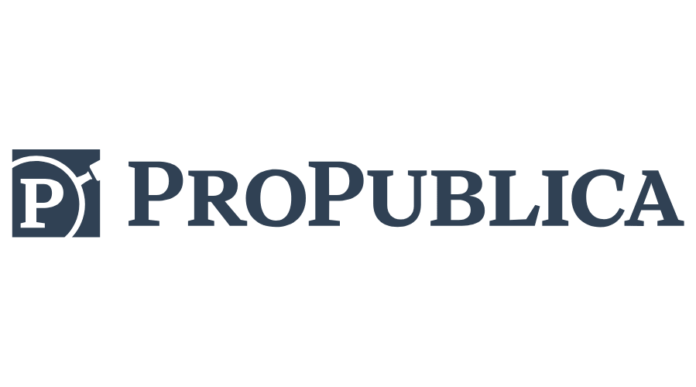ProPublica is a nonprofit newsroom that investigates abuses of power. Sign up to receive our biggest stories as soon as they’re published.
This year marked our 10th reader survey, and we had our largest response ever, with more than 12,000 readers taking the time to give us feedback. As always, we are sharing some of our results with you.
In 2020, ProPublica saw an enormous growth in readership, as we covered the pandemic. This year, we’ve continued to reach new readers, though at a slower pace: 21% of respondents said they were new to ProPublica’s work, down from 27% last year. Thirty-two percent have been reading our work for one to two years, 30% for three to five years and 16% for over five years. We also asked how often you read ProPublica’s stories, and 78% of survey respondents reported reading our work at least once a week, down from 89% last year. About 15% of you read our work once a month, and 7% read us less often than that. This likely reflects the shift in our news coverage back to longer-term reporting projects after the urgent daily reporting we produced last year on the coronavirus pandemic.
As for what topics you’re most interested in seeing us investigate, climate change and the environment have become the most urgent issues on your mind, with 66% of readers casting votes for them. The federal government and inequality were close behind with 58%, while healthcare, Wall Street and corporate accountability, and economy and labor issues (all at 52%) were also of interest to more than half of respondents. Among those who identified as people of color, 60-70% of readers were interested in inequality, climate change and the environment, economy and labor issues, and criminal justice. Respondents of color also listed education, privacy, technology and immigration as significantly higher-priority topics than white respondents.
The racial demographics of our surveyed audience this year stayed relatively consistent with last year, with 81% of respondents identifying as non-Hispanic white, 5% Latino or Hispanic, 4% Black or African American, 3% East Asian or Asian American and 1% or less South Asian, Native American, Pacific Islander, Middle Eastern or Arab American. (Seven percent opted not to self-identify.) We have been working to reach more diverse audiences with our work, and our newest respondents — those of you who have been following our work for less than a year — are somewhat more diverse, with just 76% identifying themselves as non-Hispanic white.
For gender, we continue to see fairly even readership between men and women, though our respondents skewed slightly male this year, with men accounting for 51% and women making up 47%. Slightly more than 1% of respondents identified as trans or gender-nonconforming. Sixty-eight percent of survey respondents report being older than 55, 22% are 35 to 54 years old and 10% are younger than 35.
As ever, you continue to be a highly educated group, with 81% of you having a college degree, and 45% holding a postgraduate degree. Among our newest readers, 24% do not have a college degree. Income, too, is similar to last year, with 35% of you earning $50,000 to $100,000 and 40% earning over $100,000. The share of our readers making less than $75,000 was down slightly, to 42%, from 44% last year.
The political leanings of those who took the survey have shifted slightly to the right. Nine percent reported being conservative (up from 7%), 7% moderately so (up from 6%). (Our newest readers, again, were the most likely to identify as conservative, with 18% identifying as conservative, 14% moderately so.) Eighty-two percent reported being liberal, 47% moderately so. (Gallup’s latest report is that 36% of Americans describe themselves as conservatives and 25% as liberals.) The majority of respondents continue to describe us as nonideological, though that fell slightly to 44%, down from 46% last year. Also, 20% of respondents described us as moderate — up from 17% last year. In your own words, you most frequently described our work as “independent,” “in-depth” and “unbiased,” which are all things we strive to achieve.
Compared to past years, a smaller percentage of you say you primarily get your national news online — 78%, down from 82% last year. Perhaps due to the pandemic lockdowns and perhaps due to the growing geographic diversity of both our coverage and our audience, television was the biggest beneficiary of this shift, with 11% of you indicating it as your primary source of information, up from 9% last year; radio listening also rebounded slightly (perhaps as more of you resumed commuting), while print newspaper readership remained flat. At the local news level, your news habits remained relatively constant from last year, with the majority of you saying online sources are the primary way you get local news (49%), followed by TV (25%) and print (17%).
ProPublica’s mission is to drive real-world change through the power of investigative journalism. To achieve this goal, we strive to reach readers who can help address the issues raised in our reporting. So we asked you about your level of civic engagement, a topic we hadn’t covered in our survey in recent years. Eighty-eight percent of respondents said they had voted in a national election in the past year, 82% voted in a local election, 72% donated money to a local charity or cause, and 60% contacted an elected official or government office and/or signed a petition.
Thank you to everyone who shared your comments and feedback with us. This survey is an immensely useful tool for helping us learn more about who we’re reaching, why you value our work and who we are not yet reaching. All of these things give us new information that makes us better able to serve our mission.







